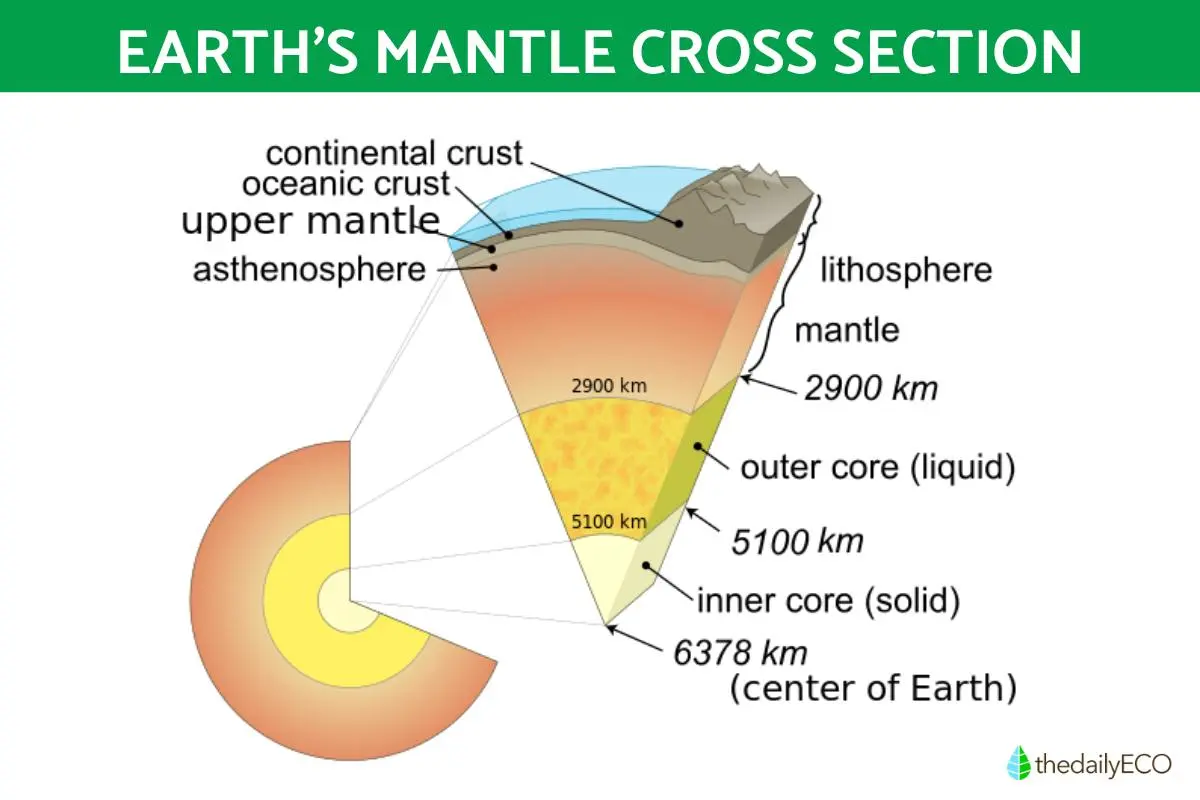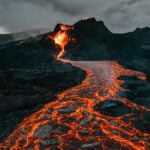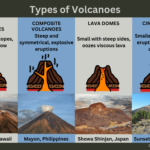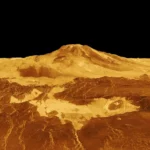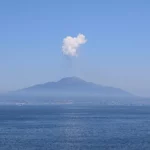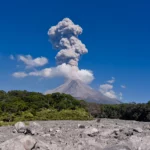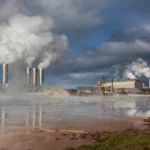Beneath our very feet lies a hidden realm of molten rock, a realm that holds the key to understanding Earth’s ever-changing landscapes and the forces that shape our planet. Get ready to dive into the captivating world of the asthenosphere, a layer of mind-boggling mystery that plays a pivotal role in plate tectonics, the formation of volcanoes, and the evolution of our planet. Join us as we unravel five astonishing facts about this enigmatic layer and discover the secrets it holds, secrets that have been hidden beneath our feet for ages.
Asthenosphere Facts
Let’s imagine the Earth’s interior as a layered cake. You’ve got the crust, the part we live on, which is like the hard icing on top. Just below that, you’ll find the asthenosphere. Now, this layer isn’t as rigid as the crust. Think of it like warm pudding – gooey and soft. This “gooeyness,” scientifically known as low viscosity, is what makes the asthenosphere so interesting!
Here’s the kicker: it’s this semi-fluid nature that allows the Earth’s tectonic plates, those giant puzzle pieces that make up the crust, to move around. Imagine these plates surfing on top of the asthenosphere, bumping into each other, pulling apart, or even diving under one another. That’s what causes earthquakes, volcanoes, and even those majestic mountain ranges we marvel at.
Speaking of mountains, did you know the asthenosphere played a crucial role in their formation? Way back when the Earth was still cooling down, this layer was even hotter and more fluid. This allowed the continents, which were basically floating on this “pudding,” to crash into each other and push up massive chunks of rock, forming the first mountains.
Now, you might be wondering just how deep down you’d have to dig to find this “Earth pudding.” Well, it’s not a fixed depth. Imagine trying to measure the depth of a layer of pudding that’s constantly shifting and changing—it’s tricky! On average, though, the asthenosphere starts roughly 40 to 280 kilometers below the surface and can extend down to a whopping 700 kilometers in some places.
But the asthenosphere isn’t just about moving plates and creating mountains. It impacts our planet in countless ways. Think of it as the Earth’s internal engine, constantly churning and driving many geological processes. It’s involved in volcanic eruptions, the formation of new crust at mid-ocean ridges, and even the way heat travels from the Earth’s core to its surface.
Scientists are still hard at work, using techniques like seismic imaging – think of it like taking an X-ray of the Earth – to understand the asthenosphere better. Every discovery brings us closer to unraveling the mysteries of this hidden world beneath our feet and its profound influence on the planet we call home.
Interested in learning more about what makes up the lithosphere? We have just the article to help you out! Another topic that might interest you is what temperature is the lithosphere. Follow the link to learn more!
What is the Asthenosphere Made of and How Hot is it?
So, we’ve talked about the Earth’s crust, but what lies beneath? Dive a bit deeper, and you’ll encounter the asthenosphere, a layer that’s crucial to understanding how our planet behaves. Imagine this: starting at around 50 miles below the surface and stretching down to a whopping 435 miles, there’s a zone of super-hot, partially molten rock. This, my friends, is the asthenosphere!
Now, you might be wondering, “What exactly is this hot stuff made of?” Good question! Think of a rock called peridotite—that’s the asthenosphere’s main ingredient. Peridotite itself is a blend of minerals, primarily olivine and pyroxene, which give the asthenosphere its unique characteristics.
And how hot are we talking? Buckle up, because things are about to get toasty! The temperature in the asthenosphere can reach a scorching 1,300°C (2,370°F). That intense heat actually makes the rock partially melt, giving the asthenosphere a kind of “gooey” consistency.
Think of it like this: imagine a chocolate bar left out in the sun. The chocolate doesn’t completely melt into liquid, but it becomes soft and malleable. That’s kind of what’s happening in the asthenosphere! This partially molten state is what allows the Earth’s tectonic plates—those giant slabs of rock that make up the Earth’s outer layer—to move and shift around on top of it.
How do We Know the Asthenosphere Exists?
Okay, so we’ve been talking about this hidden world beneath our feet, right? We know the Earth’s crust is this solid shell, but it’s what lies beneath that gets really interesting – the asthenosphere. But how can we be so sure it’s even there if we can’t see it? Well, scientists have gotten pretty clever at using some high-tech tools and observations to “see” inside our planet.
Seismic Tomography: Earth’s X-ray Vision
Imagine taking an X-ray, but instead of your bones, it’s the entire planet! That’s kind of what seismic tomography does. It uses earthquakes (don’t worry, we don’t need to cause them – they happen naturally!) as giant sound waves. These waves, called seismic waves, travel through the Earth, and how fast they go and where they bend tells us a lot about what they’re traveling through. Think of how sound changes when you whisper into a pillow versus shouting across a canyon. It’s like that! Scientists use this data to create 3D maps of the Earth’s insides, revealing the existence of the asthenosphere.
Seismic Waves: Whispers from the Deep
Remember those seismic waves? Well, they’re more than just speed demons. They change their tune depending on what they pass through. When they hit the asthenosphere, they slow down and get a little wobbly. This change in behavior is a dead giveaway that they’ve encountered something different – something partially melted and gooey, which is a perfect description of the asthenosphere!
Plate Tectonics: The Earth’s Slow Dance
Think about a giant puzzle, but the pieces are always moving – very, very slowly. That’s plate tectonics! The Earth’s surface is broken into these massive plates that slide around on the asthenosphere. We see this movement through earthquakes, volcanoes, and the formation of mountains. But here’s the thing: these plates wouldn’t be able to move at all if they were stuck on something solid. They need something somewhat soft and yielding underneath, and that’s where our friend the asthenosphere comes in! It acts like a giant lubricating layer, allowing the plates to do their thing.
So, while we can’t dig down and touch the asthenosphere, we have plenty of evidence to prove it’s there. By listening to the Earth’s rumbles, studying how waves travel through it, and observing the slow dance of the continents, we’ve uncovered one of the planet’s most fascinating secrets!
How Does the Asthenosphere Affect the Earth’s Surface?
Okay, so we know the Earth’s surface is always changing, right? Mountains rise, volcanoes erupt, and earthquakes shake things up. But have you ever wondered what drives all this action? The answer lies deep beneath our feet, in a zone called the asthenosphere.
Think of the asthenosphere like a giant, super-hot lava lamp. It’s not exactly liquid rock, but it’s not solid either – more like really thick putty. This “putty-like” consistency is what allows the Earth’s massive tectonic plates (those giant slabs of rock that make up the Earth’s crust) to actually move around.
Here’s How the Asthenosphere Makes Things Happen:
- Plate Tectonics: Because the asthenosphere is so gooey, the plates can slowly drift on top of it, kinda like rafts on a slow-moving river. This movement causes the plates to bump into each other, pull apart, or rub alongside one another. It’s these interactions that are responsible for those dramatic events we mentioned earlier:
- Earthquakes: When plates collide or grind past each other, the pressure builds up until BAM – the asthenosphere can’t hold it anymore. The built-up energy is released, resulting in the shaking and trembling we know as earthquakes.
- Volcanoes: The asthenosphere is also where molten rock (magma) hangs out. When plates move apart, it creates space for this magma to rise up through cracks and erupt on the surface, forming volcanoes and shaping the land around them.
- Mountain Ranges: Remember those colliding plates? Well, sometimes, they push against each other with so much force that the land crumples and folds upwards, creating majestic mountain ranges over millions of years.
- Heat Transfer and Surface Temperature: The asthenosphere isn’t just about movement; it’s also a key player in Earth’s internal heating system. Think of it as a giant convection oven. Hot material from deep inside the Earth rises up through the asthenosphere, transferring heat towards the surface. This heat influences surface temperatures and even fuels volcanic activity.
- Keeping Things Balanced (Isostasy): Imagine placing a heavy book on a waterbed. The bed sinks under the weight, right? The asthenosphere acts similarly. If a massive glacier forms on the Earth’s surface, the asthenosphere will slowly flow out of the way, allowing the crust to sink a bit. When the glacier melts, the asthenosphere flows back in, and the crust rises again. It’s a constant balancing act that keeps things relatively stable.
So, the next time you see a mountain range, feel an earthquake, or witness the raw power of a volcano, remember the asthenosphere – the hidden force deep within our planet that shapes the world we see today.
FAQ
Q1: What is the asthenosphere?
A1: The asthenosphere is a semi-fluid layer located beneath the Earth’s lithosphere, characterized by its higher temperature and ductility, allowing tectonic plates to move and reshape the Earth’s crust.
Q2: How deep is the asthenosphere?
A2: The asthenosphere extends from approximately 100 km to 700 km below the Earth’s surface, situated within the upper mantle.
Q3: What role does the asthenosphere play in plate tectonics?
A3: The asthenosphere’s semi-fluid nature acts as a lubricating layer, facilitating the movement of tectonic plates across the planet’s surface, driving plate tectonic processes.
Q4: How is the asthenosphere formed?
A4: The asthenosphere is believed to have formed during a significant heating phase in Earth’s history, resulting in the partial melting of rocks within the mantle.
Q5: What is the composition of the asthenosphere?
A5: The asthenosphere is primarily composed of peridotite, a rock containing olivine and pyroxene, which exhibits a semi-molten state due to the high temperature and pressure within this layer.
- Unlock Water’s Symbolism: A Cross-Cultural Exploration - April 20, 2025
- Identify Black and White Snakes: Venomous or Harmless? - April 20, 2025
- Unlocking Potential: Origins High School’s NYC Story - April 20, 2025
